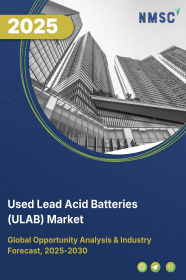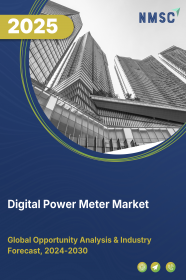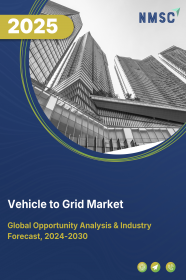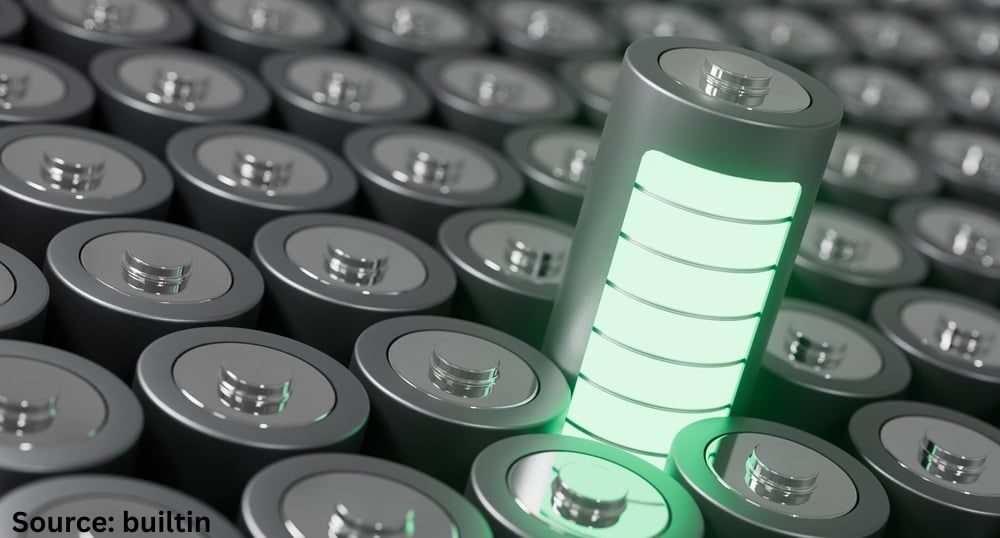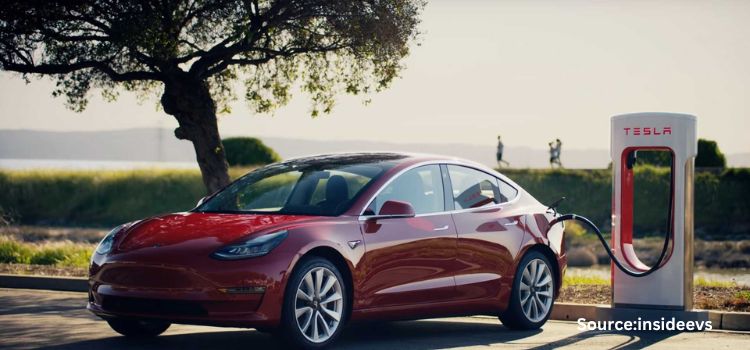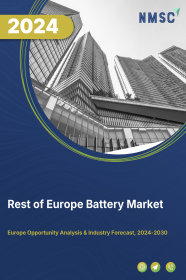
Rest of Europe Battery Market by Type (Lead Acid, Lithium Ion, Nickel Metal Hydride, Nickel Cadmium, and Others), by Application (Residential, Industrial, and Commercial), and by Power Systems (Fuel Cell Batteries, Proton-Exchange Membrane Fuel Cells, Alkaline Fuel Cells, Phosphoric Acid Fuel Cells, Solid Oxide Fuel Cells, Molten Carbonate Fuel Cells, Air Cells, Flywheel Energy Storage, Nuclear Batteries) – Opportunity Analysis and Industry Forecast 2023-2030
Industry: Energy & Power | Publish Date: 03-Dec-2024 | No of Pages: 78 | No. of Tables: 55 | No. of Figures: 27 | Format: PDF | Report Code : EP720
US Tariff Impact on Rest of Europe Battery Market
Trump Tariffs Are Reshaping Global Business
Market Overview
Rest of Europe Battery Market was valued at USD 3.35 billion in 2022, and is predicted to reach USD 13.05 billion by 2030, with a CAGR of 18.5% from 2023 to 2030.
A battery operates as a mechanism that stores energy and later releases it by transforming chemical energy into electrical energy. Typically, batteries produce electricity by harnessing one or more electrochemical cells. Batteries can be categorized into two distinct types: primary batteries and secondary batteries. Primary batteries, also known as non-rechargeable batteries, offer a straightforward and convenient energy supply for various portable electronic and electrical devices, including cameras, watches, toys, lights, radios, and more. In contrast, secondary batteries, often referred to as rechargeable batteries, possess the capability to be recharged electrically once they've been depleted. These energy storage solutions have evolved into indispensable sources of power in our daily routines. The progress of cutting-edge technologies, encompassing smartphones, tablets, laptops, solar energy systems, and electric vehicles (EVs), has ushered in the era of robust batteries capable of prolonged endurance and providing essential energy requirements.
Hungary's Role in the European Battery Industry's Green Transition
The Rest of Europe consists of countries such as Hungary and Portugal. Hungary is taking the lead in central Eastern Europe to join the European battery industry’s goal to secure a successful green transition within the automotive and energy sector with a strong battery industry to achieve the national as well as European climate goals. For instance, in November 2020, the Hungarian Ministry of Innovation and Technology in cooperation with EIT InnoEnergy announced the development of a national strategy for the Hungarian battery industry. The country aims to drive economic development and growth with this strategy, while ensuring successful green transition of the Hungarian energy and mobility industries. It will further enable Hungary along with local and international industry partners, authorities, and academic & financial sectors to become an integral part of the European supply chain of batteries and the European Battery Alliance (EBA). Such government initiatives have influenced several industry leaders in the battery market to invest in Hungary, which, in turn, is fueling the growth of the battery market.
Automotive Electrification Reshaping the Rest of Europe's Mobility Landscape
The push towards electric mobility is reshaping the automotive sector in the Rest of Europe. As countries set stringent emission standards and incentivize electric vehicle adoption, the demand for batteries used in electric cars is escalating. This surge is not only fuelled by environmental concerns but also by consumer preferences for efficient and eco-friendly transportation. Thus, it is expected to create significant growth of the battery market.
Safety Concerns Associated with Battery Utilization in Rest of Europe
Inadequate handling of batteries can pose numerous risks to human well-being and the environment. The improper disposal of used or exhausted batteries is a prevalent practice, resulting in their disposal in landfills where they gradually break down, releasing hazardous substances. Over time, these batteries deteriorate, emitting chemical components that can seep into the soil and have adverse effects on both groundwater and surface water. As a result, this pollution significantly disrupts the ecosystem, jeopardizing aquatic plants and animals that come into contact with harmful battery elements like mercury, cadmium, lithium, and lead. Consequently, these issues are expected to hinder the growth of the battery market in the region.
Introduction of Nano-Diamond Batteries (NDB) in Multiple Industries
The increasing adoption of Nuclear Diamond Batteries (NDBs) across a range of sectors such as automotive, aerospace, and electronics is poised to unlock new opportunities in the Rest of Europe's battery market. NDBs represent a revolutionary leap in energy generation and storage, fundamentally reshaping the concept of batteries. These batteries exhibit exceptional longevity by tapping into the energy generated from the radioactive decay of nuclear waste. The trajectory of the battery market is being influenced by the compelling features of NDBs, including their compact size, versatility, cost-effectiveness, and scalability across diverse applications, spanning from compact chipsets to large-scale industrial installations. Operating as advanced diamond-based alpha, beta, and neutron voltaic batteries, NDBs provide a continuous supply of clean energy for a wide spectrum of applications, outperforming the capabilities of traditional chemical batteries.
Competitive Landscape
The Rest of Europe battery industry includes several market players such as LG Chem Ltd., CATL, Samsung SDI Co. Ltd., BYD, SKI, ENVISION AESC GROUP LTD., Gotion High tech Co Ltd, Primearth EV Energy Co., Ltd., China Aviation Lithium Battery Co., Ltd., Panasonic Corporation.
Key Benefits
-
The Rest of Europe battery market report provides a quantitative analysis of the current market and estimations through 2023-2030 that assists in identifying the prevailing market opportunities to capitalize on.
-
The study comprises a deep dive analysis of the market trend including the current and future trends for depicting the prevalent investment pockets in the market.
-
The information related to key drivers, restraints, and opportunities and their impact on the market is provided in the report.
-
The competitive analysis of the market players along with their market share in the Rest of Europe battery market.
-
The SWOT analysis and Porter’s Five Forces model are elaborated in the study.
-
Value chain analysis in the market study provides a clear picture of the stakeholders’ roles.
Rest Of Europe Battery Market Key Segments
By Type
-
Lead Acid
-
Stationary
-
Motive
-
-
Lithium Ion
-
Lithium Nickel Manganese Cobalt (LI-NMC)
-
Lithium Iron Phosphate (LFP)
-
Lithium Cobalt Oxide (LCO)
-
Lithium Titanate Oxide (LTO)
-
Lithium Manganese Oxide (LMO)
-
Lithium Nickel Cobalt Aluminum Oxide (NCA)
-
-
Nickel Metal Hydride
-
Nickel Cadmium
-
Others
By Application
-
Residential
-
Industrial
-
Manufacturing & Construction
-
Automotive
-
Medical
-
Telecom & IT
-
Consumer Electronics
-
Power & Utility
-
Aerospace
-
Marine
-
Others
-
-
Commercial
By Power Systems
-
Fuel Cell batteries
-
Proton-Exchange Membrane Fuel Cells
-
Alkaline Fuel Cells
-
Phosphoric Acid Fuel Cells
-
Solid Oxide Fuel Cells
-
Molten Carbonate Fuel Cells
-
Air Cells
-
Flywheel Energy Storage
-
Nuclear Batteries
REPORT SCOPE AND SEGMENTATION:
|
Parameters |
Details |
|
Market Size in 2022 |
USD 3.35 billion |
|
Revenue Forecast in 2030 |
USD 13.05 billion |
|
Growth Rate |
CAGR of 18.5% from 2023 to 2030 |
|
Analysis Period |
2022–2030 |
|
Base Year Considered |
2022 |
|
Forecast Period |
2023–2030 |
|
Market Size Estimation |
Billion (USD) |
|
Growth Factors |
The growing government incentives The adoption of hybrid vehicles |
|
Companies Profiled |
10 |
|
Market Share |
Available for 10 companies |
|
Customization Scope |
Free customization (equivalent up to 80 working hours of analysts) after purchase. Addition or alteration to country, regional, and segment scope. |
|
Pricing and Purchase Options |
Avail customized purchase options to meet your exact research needs. |
Key Players
-
LG Chem Ltd.
-
CATL
-
Samsung SDI Co. Ltd.
-
BYD
-
SKI
-
ENVISION AESC GROUP LTD.
-
Gotion High tech Co Ltd
-
Primearth EV Energy Co., Ltd.
-
China Aviation Lithium Battery Co., Ltd.
-
Panasonic Corporation

















 Speak to Our Analyst
Speak to Our Analyst



